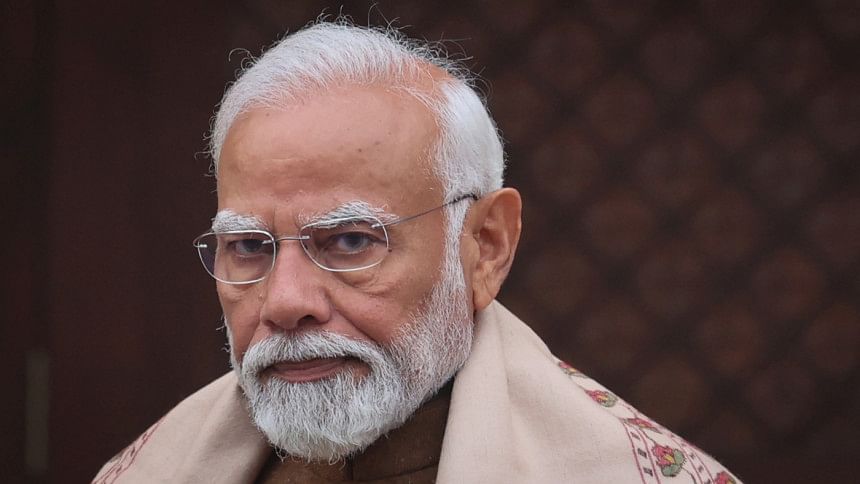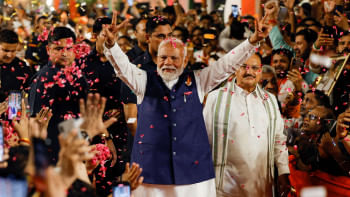First budget of Modi govt 3.0: Political exigencies and beyond

India's annual budget is always as much an economic statement as it is political. And the first fully fledged annual budget of Prime Minister Narendra Modi's third successive term clearly reflected the changed political realities after the recent national elections saw the Bharatiya Janata Party (BJP) posting a below-par performance, missing the majority mark in the Lok Sabha and being forced to depend on the support of its allies for survival.
When Modi retained almost all the members of his second cabinet with the same portfolios in his third tenure, many analysts were tempted to wonder if he would be a changed man in his third term without a clear majority. But the July 23 budget proposal indicates change has begun to set in, taking a cue from the recent national election results.
Statistics don't always reveal the full reality. But they don't hide the reality either. The budget clearly reflects three major political realities that Modi-led BJP has come to terms with post-parliamentary elections. First, it lacks a majority on its own after having enjoyed the same for a decade since 2014. Secondly, as a logical consequence of the first, Modi is critically dependent on the support of his major allies, Telugu Desam Party (TDP) ruling Andhra Pradesh having 16 lawmakers and Janata Dal (United) governing Bihar with a dozen MPs. Thirdly, the budget has acknowledged what Modi and BJP are loath to accept in public: that unemployment, an issue forcefully brought up during the electioneering, is among the crucial factors responsible for pulling down the saffron party's numbers.
There is little doubt the FY2024-25 budget has kept in mind the reality of changed numbers in the 18th Lok Sabha. It is, therefore, no surprise that Finance Minister Nirmala Sitharaman loosened the purse strings for TDP and JDU with a surfeit of development schemes for Bihar and Andhra Pradesh. She announced funds for early completion of a key irrigation project, industrial development of Andhra Pradesh, infrastructure like water, power, railways and roads, and additional allocation towards capital investment for economic growth of the state and grants for backward regions. Bihar got support for capital investments in the development of road connectivity projects in the state at a cost of 26,000 crore rupees. Expressway over the Ganges River, a new 2,400MW power plant, new airports, medical colleges and sports infrastructure in the state are among the other promises made in the budget, reflecting BJP's political exigency. By keeping the two parties in good humour, Modi has underlined his intent for ensuring political and macroeconomic stability.
Implicit in the budgetary promise to pump in $24 billion to be spent in the next five years to create jobs is that the problem of joblessness has been staring at the economy. India's official unemployment rate in urban areas is 6.7 percent, but the Centre For Monitoring Indian Economy (CMIE) pegs it at 8.4 percent. The government's economic survey, presented in parliament a day before the budget, says the Indian economy needs to generate an average of nearly 78.5 lakh jobs annually until 2030 in the non-farm sector to cater to the rising workforce. The budget has sought to engineer a fine balance between supporting job creation and skilling, envisaging $32 billion for rural development this year alone and promoting agriculture, along with continued focus on infrastructure spending without sacrificing fiscal prudence.
Sitharaman announced three schemes for "employment linked incentive" as part of the prime minister's package. These will be based on enrolment in the provident fund with focus on recognition of first-time employees and support to employees and employers. The other budgetary measures aimed at boosting employment include incentives for companies to train staff as well as cheaper loans for higher education. There is also a substantial amount of welfare to be spent on women-led development and the agriculture sector covering a large part of the electorate. The government has ample resources to increase spending without jeopardising its fiscal deficit plans due to a significant windfall of $25.3 billion from the Reserve Bank of India and a surge in tax revenues powered by the economy's expected growth of over seven percent this fiscal year.
The budget is also providing for the MSME sector with the help of a credit guarantee scheme to help the manufacturing sector obtain loans to finance their purchases of machinery and equipment without collateral or a third-party guarantee. In doing this, the government is apparently mindful of a perception, right or wrong, that it is pro-big corporate houses. It is not coincidental that the economic survey points out that the corporate sector has not done its bit to help job creation despite the union government cutting taxes in September 2019 to facilitate capital formation. According to the survey, "… Between FY20 and FY23, the profit before taxes of the Indian corporate sector nearly quadrupled… hiring and compensation growth hardly kept up with it."
The opposition Congress has dubbed the budget as a "kursi bachao" exercise, an unstated reference to the budget pandering to the wish lists of TDP and JDU. But there is another important messaging in the Modi government's outreach to its two regional allies: that of signalling to other powerful regional parties which are outside the BJP-led alliance that they, too, can have a share in the federal government's much bigger power pie.
Pallab Bhattacharya is a special correspondent for The Daily Star. He writes from New Delhi, India.
Views expressed in this article are the author's own.
Follow The Daily Star Opinion on Facebook for the latest opinions, commentaries and analyses by experts and professionals. To contribute your article or letter to The Daily Star Opinion, see our guidelines for submission.

 For all latest news, follow The Daily Star's Google News channel.
For all latest news, follow The Daily Star's Google News channel. 










Comments